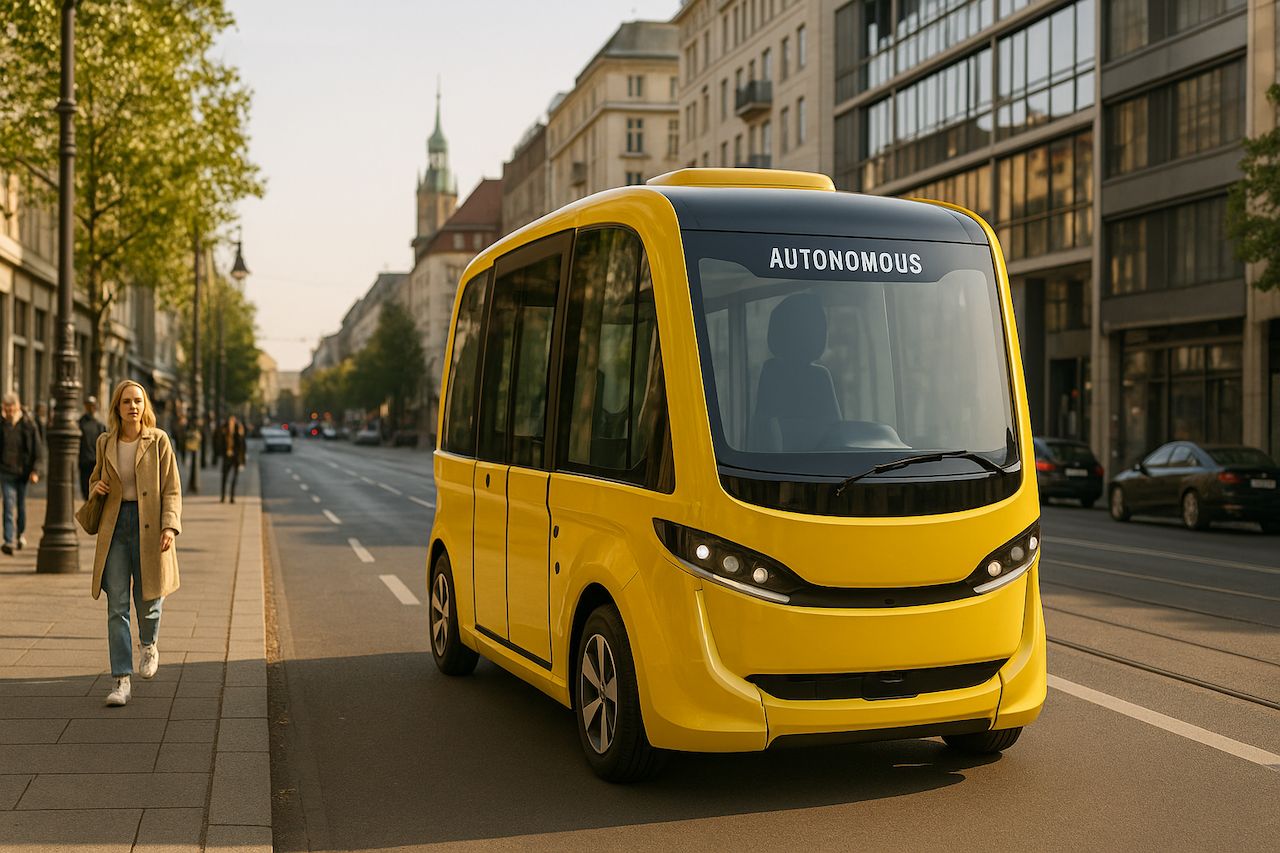
BVG’s autonomous minibuses debut in Berlin
Berlin’s main operator of the urban transport network—including trams, buses, underground and ferries—the Berliner Verkehrsbetriebe (BVG), is launching a large-scale pilot project to integrate autonomous minibuses into the capital’s public transport system. It is worth noting that residents of about a dozen German cities already use similar buses within various innovation initiatives.
Views of experts from different countries on the widespread use of driverless public transport differ somewhat.
Some are sure this is a promising alternative to traditional transport modes, capable of solving parking and congestion problems in megacities and making city travel safer, more accessible and more comfortable for everyone—especially for older people and people with disabilities.
Others point to the need to create new professions for servicing autonomous technologies and to adapt the population to new forms of mobility, as well as to concerns related to the interaction of autonomous transport with other road users and the risk of hacking attacks or system failures based on artificial intelligence and sensors.
Nevertheless, both sides agree on the undeniable advantages of “transport without human participation.” A few of them:
-
Increased road safety: an AI system can monitor the traffic environment at a considerable distance; in case of potential danger it can stop the vehicle instantly.
-
Efficient operation in adverse weather conditions (the notorious “human factor” is absent).
-
Strict compliance with traffic rules and instant reaction to changing road conditions.
-
Route optimisation while driving.
-
Savings in financial and material costs for transport firms and companies (no expenses for salaries, vacation or sick pay, etc.).
-
Thanks to the ability to choose the most favourable routes, idle time—for example in traffic jams—decreases.This means lower greenhouse-gas emissions, including for vehicles equipped with electric drives (carbon dioxide, CO₂).
-
Due to reduced need for drivers, lower energy consumption and shorter maintenance cycles, transport costs decrease significantly, which makes autonomous public transport more affordable for passengers.
Undoubtedly, the systematic introduction of the latest AI technologies into this niche of urban transport requires significant initial investment. But assessments by experts in transport operations and management indicate that the widespread application of these technologies will, in the medium and long term, prevail with clear, tangible benefitsover the anticipated costs.
In the coming days, five fully electric minibuses will start operating in the north-west of the capital. First they will undergo tests without passengers. In the first half of 2026, trial operation with “test volunteers” and a safety staff member on board will begin, lasting about one year. For this, BVG plans to form permanent test groups: those wishing to participate can apply from the beginning of next year.
The “test area” covers 15 square kilometres in the administrative districts of Spandau, Charlottenburg-Wilmersdorfand Reinickendorf. The total length of all routes is 55 kilometres, with 80 stops. It is expected that the electric shuttleswill run Monday to Friday from 09:00 to 16:00.
The project is being carried out in close cooperation between BVG and partners from business and science. These include Volkswagen Moia, the Technical University of Berlin (Technische Universität Berlin), the Institute for Climate Protection, Energy and Mobility (Institut für Klimaschutz, Energie und Mobilität e. V.), and the Senate of Berlin (Senat von Berlin).
To ensure step-by-step implementation of the project, Germany’s Federal Ministry for Digital and Transport (Bundesministerium für Digitales und Verkehr, BMDV) has provided €9.5 million.
Tags: autonomous buses Berlin , BVG transport project , electric minibuses Berlin , mobility innovation Germany , driverless transport capital , BVG test program , Spandau routes , Charlottenburg-Wilmersdorf transport , Reinickendorf network , climate mobility Berlin , future urban transport , electric shuttles Germany , AI in transport , smart mobility Berlin , Volkswagen Moia project , BVG pilot test , public transport Berlin , urban innovation Berlin , autonomous driving Germany , driverless minibuses , BVG test area , new transport technology , mobility of the future , electric buses capital , AI-driven mobility , intelligent routes Berlin
Categories: Latest


